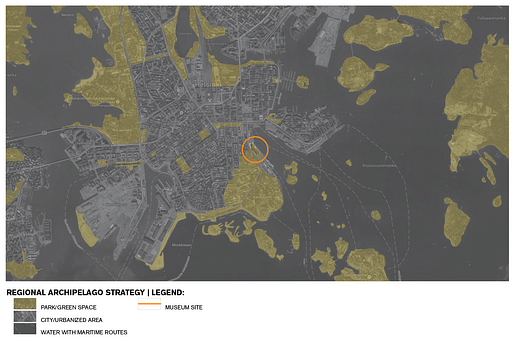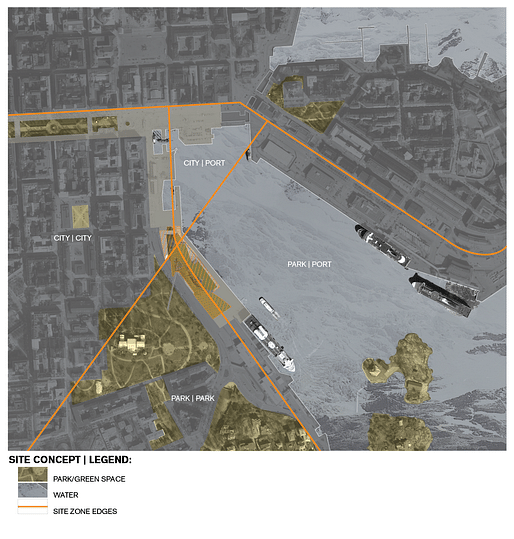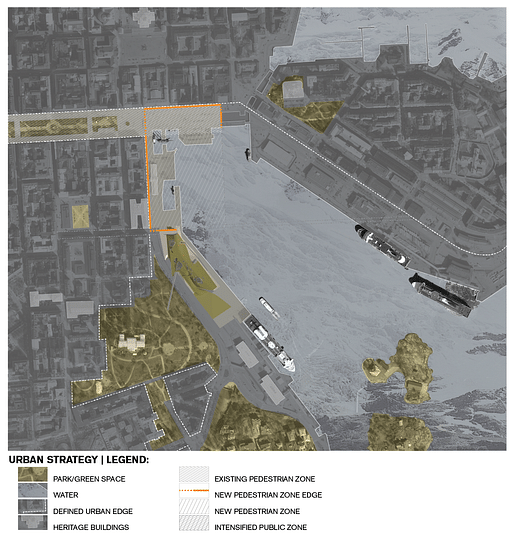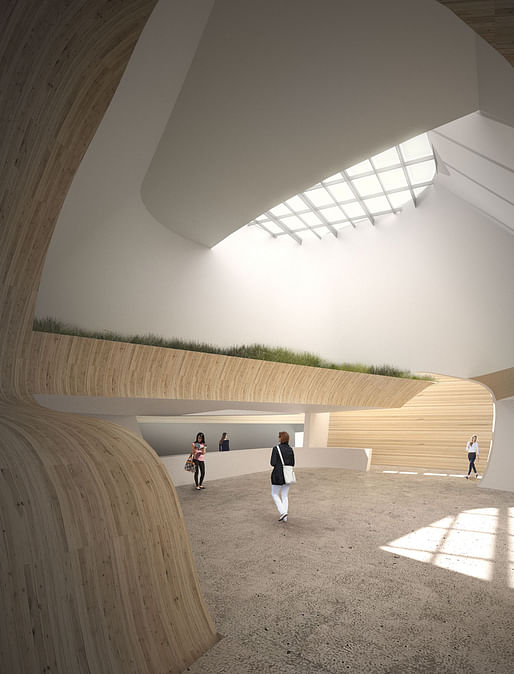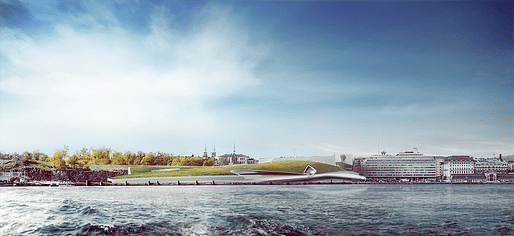

Our proposal strategically intensifies and reimagines the Guggenheim Museum producing an iconic cultural landmark by sculpting natural light through physical and conceptual layers. These strata develop a rich, dynamic and varied experience synergistically contextualizing the museum at multiple scales to the material and cultural fabric of Helsinki and Finland. The design supplants the object/icon building (visually distinct, discrete parts) with a new subtle icon, embedded in Finnish culture (emotional, connected) and redefines Helsinki as an urbanized landscape; an extension of the museum.
We strategically integrate the building into its context by articulating the unique qualities of the adjacent context. Helsinki’s port and historic urban core are amplified by the building massing, which defines and simultaneously blurs the edges where city, park, port and water meet. We anticipate a future master plan where the north port evolves into an enhanced pedestrian experience from the Port Terminal to the Market Square and our proposal strengthens this idea on the museums northernmost edge. This edge marks the main entry to the new museum and produces a permeable boundary where the cantilevered gallery and restaurant above reinforce the southern edge of Eteläinen Makasiinikatu. This urban gesture, continuing the mass and scale of the historic buildings along Laivasillankatu also formalizes the northern port as a pedestrian focused space for gathering along the waters edge. The space below the cantilever is imagined as an amphitheater where visitors can watch a myriad of programmed and un-programmed events with views of the north port setting the scene.
Urban Strategy
When looking south, back from Market Square, the building presents itself as a clean, modern addition to the historic urban fabric while only hinting at what lies beyond. Along the western edge of the new museum, the building forms an edge between the city/port and the park/port, where the Laivasillankatu and the port access road are spatially redefined as a channel leading to a threshold at Eteläinen Makasiinikatu. This threshold heightens vehicular and pedestrian arrival to the northern port district via spatial compression and release. From the port terminal and further south, the museum raises the ground plane to link the museum roof with Tähtitornin vuori park, conceptually extending the park to the waters edge. At a regional scale the project connects the museum to Helsinki’s “green fingers” blending this new enlarged park as part of this extended archipelago. At a national scale the project evokes the Finnish ethos, manifesting the nations emotional connection to the natural landscape that is bathed in a sublime light.
Visitors arrive at the main entrance from the vehicular drop-off at the museums northernmost edge. From this location you enter by traveling up a gentle slope visually connected to the Museum Gift Shop and to the Café along the water’s edge, heightening your ascension through the section of the landscape. The gift shop and cafe can be accessed from the ground floor connecting the base of the building to the pedestrian experience of the new district. This procession from the ground up to the new-elevated landscape situates one within the heart of the building. Another entrance connects Tähtitornin vuori park from the west via a bridge across Laivasillankatu to an elevated sculpture plaza conceptually extending the new art landscape into the existing park. This plaza can also be reached via a grand stair from the new pedestrian/bike path along Laivasillankatu. The plaza provides opportunity for sculptures to be viewed prior to ticketing and provides new outdoor opportunities for events within the site. The final entrance faces east and connects the port terminal along a new boardwalk where you would have the option to gently walk up to the upper level or to continue on the quay to the north passing the café and several galleries along the way. All three entrances lead you to the main atrium, which serves as a wayfinding device within the site and where the multi-layered concept of the building is first revealed.
Program Organization
Internally the museum is efficiently organized around a central core where a majority of the program is located around the buildings main atrium. Here guests find Visitors Services and are oriented by vistas through adjacent programs and back to the port. The main atrium is accessed via multiple entrances that weave together city and museum to takes one on a journey through layers of landscape, shaping and shaped by light. The new park functionally houses a majority of the galleries that are accessed via a series of smaller atria. These atria erode landscape, blurring the interior and exterior spaces and programs and ones perception art. Our proposal articulates a new model for sustainable, integrated urban development
Status: Competition Entry